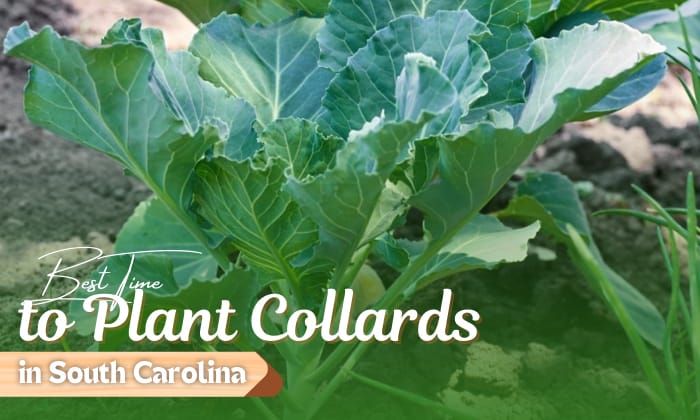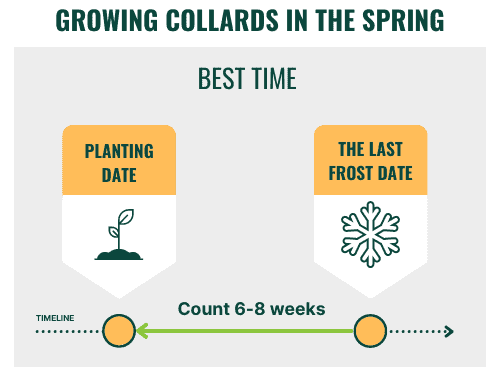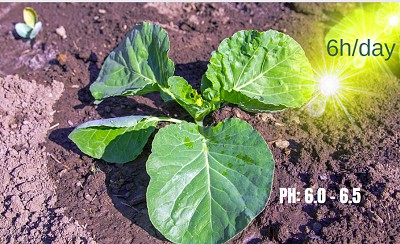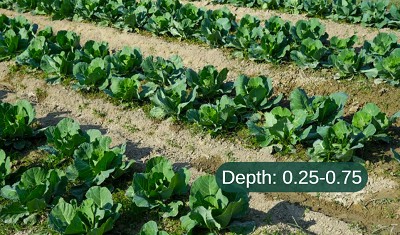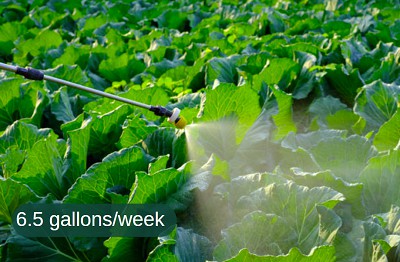Welcome to the ultimate guide for collard planting in South Carolina! To cultivate leafy success, knowing when to plant collards in South Carolina is everything.
These leafy greens are known to thrive best in cool temperatures. As such, it’s recommended that you plant collard greens in July and August in the fall or January and March in spring.
Let’s embrace the art of collard cultivation, and soon, your garden will be bursting with healthy, flavorful greens for your table! Dig in and find out more about collards’ optimum planting season!
Table of Contents
The Best Time to Plant Collards in South Carolina
1. In July and August in the fall
Ideally, collard planting time from seed falls in July and August, as these are the months when the weather is around 55 to 75 °F—the recommended growing temperatures for our greens.
For an accurate planting date in the fall, count 80 days back from your local’s first frost. This should give the plant enough time to reach full maturity. Plus, exposure to a light frost will give collards a sweet taste, so long as the temperature doesn’t dip below 20℉.
- For example, Belton in SC sees its first freeze on October 31st, so residents here should start planting collard seeds on August 12th.
2. In January and March in the spring
Bolt-resistant cultivars are better for spring planting. In this case, you’d want to start seeds indoors 6-8 weeks before the last frost so the plants are tall enough for transplanting, which should commence 3-4 weeks before the freezing period ends.
As the last frost dates in SC range from March 1st to April 15th, the ideal time to start seed in pots indoors falls between January and March.
If you want to transplant collards in the fall as well, start seeds indoors 12 weeks before the first frost and bring them outside when they’re 4 inches tall. In any case, transplanting time after growing them in South Carolina can be on the following dates:
| Regions for Gardening | Spring | Fall |
| Piedmont | March 15 – June 30 | July 15 – September 30 |
| Central | February 15 – June 15 | July 15 – October 15 |
| Coastal | February 1 – June 15 | August 1 – October 30 |
3. In the summer for fall harvest
You can also plant collard greens in mid-July, as this timeframe allows for the seeds or young collard plants to establish themselves.
However, I don’t really recommend going down this route, considering that the summer heat can make collards chewier. Plus, cabbage loopers and cabbageworms thrive during this season, which can pose a threat to collard greens.
6 Tips for Successful Collards Planting in South Carolina
1. Prepping the Soil
Collard seedlings grow best in moist yet well-draining soil. As for pH, aim for an acidity level of 6.0 to 6.5. Preferable types of soil would also include loamy, sandy, and loose soil filled with the richness of organic matter.
2. Sun-Kissed Spots
Collards require daylight of roughly 6 hours per day. However, they don’t do well with harsh sunlight, so if this is the case for your planting location, aim for partial shade instead.
Rest assured, the plant can still thrive in partial shade so long as it meets its minimum sunlight exposure requirement.
3. Mindful Spacing
Gardeners should take note that spacing definitely matters when planting your collard greens. When starting off with seedlings, you must place them underneath the soil with a depth of 0.25-0.75 inches.
Seedlings placed much deeper than the aforementioned parameters would likely fail to germinate. In addition, each seed should be 3 inches apart and thinned down to 12 inches once they’re big enough to be supported by their true leaves.
4. Water Wisely
Collard greens do best when you water them daily in the early morning! Make sure the top 1-2 inches of the soil is always damp. If you don’t irrigate them enough, collards will become tough and stringy.
As a rule of thumb, collards should receive 6.5 gallons of water each week.
5. Fertilize Thoughtfully
When giving fertilizer for collard greens, high-nitrogen calcium nitrate is much recommended! Apply 0.5 pounds of 15.5-0-0 calcium nitrate for every 100 square feet of collard greens.
The frequency of collard green fertilization would range from 3 to 4 weeks from the day you started planting them. Take note that gardeners must always refrain from applying any fertilizer directly on the roots, as this can harm them.
Instead, apply fertilizer four to six inches from your collards and do it once again after 3 to 4 weeks!
6. Harvest Hints
Harvesting season is a fun time for everyone to reap the rewards of their hard work. But when doing so, let’s do it the right way!
For starters, you should harvest collards when the weather is cool to ensure sweet foliage. Snip off the plant using a sanitized pair of scissors so that at least 4 inches of its stem is left to produce new leaves in the future.
Alternatively, you can just harvest the leaves. If this is your preferred method, pluck the leaves from the bottom to the top, working your way inward.
Conclusion
With that, let’s all mark our calendars after discovering when to plant collards in South Carolina! Note that although growing collard greens year-round is possible in many areas in SC, fall and spring are still the best choices for a flavorful harvest.
As the Southern sun casts its golden glow, your collards will root deeply and flourish, ready to grace your table with their hearty goodness comes harvest time!
Related:

Hi, I am William – Floridayards’ digital content creator. My job is to find answers to all your concerns with thorough research and our team’s expert advice. I will also bring you honest reviews on the best products and equipment for raising your beautiful garden. Please look forward to our work!


